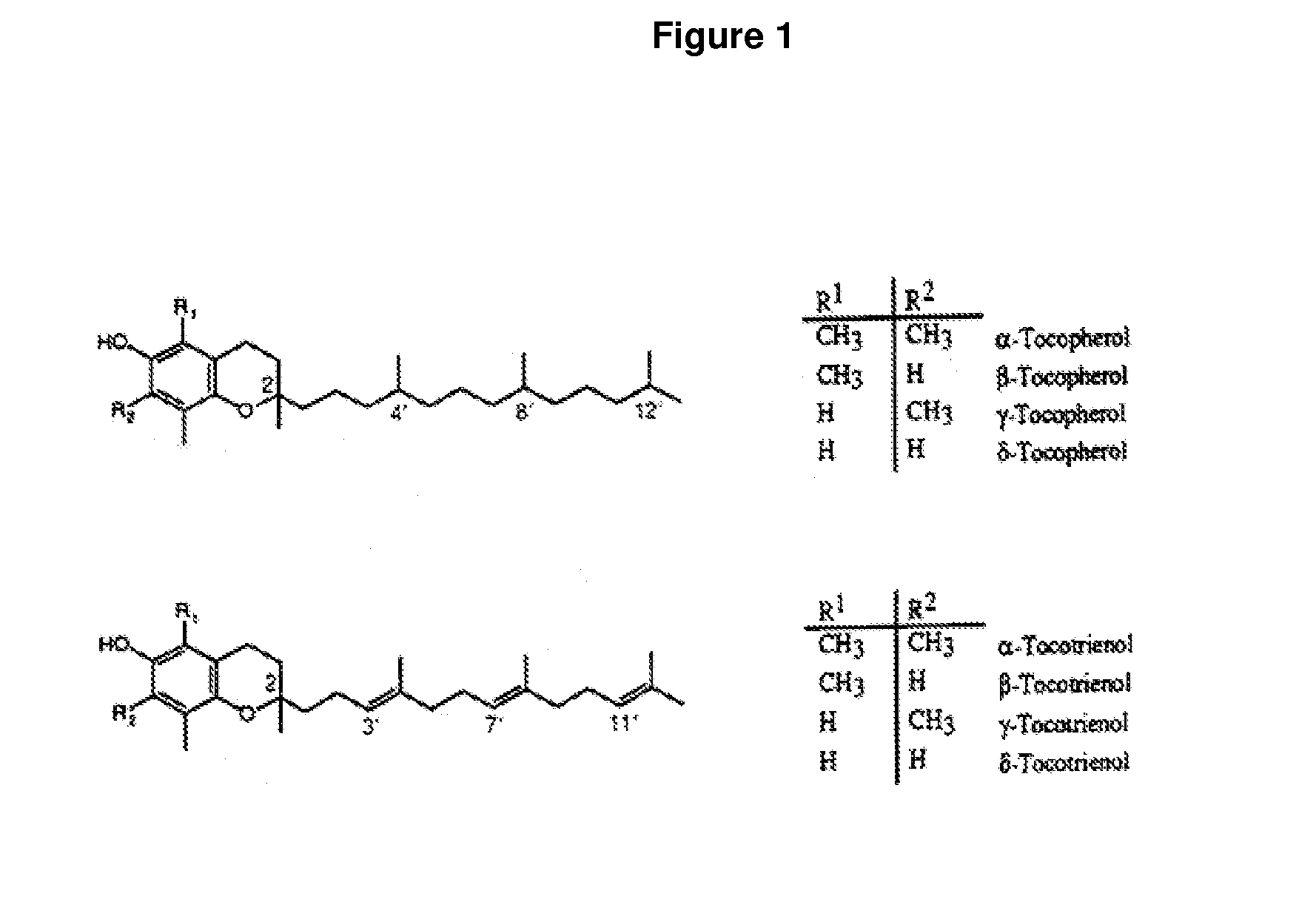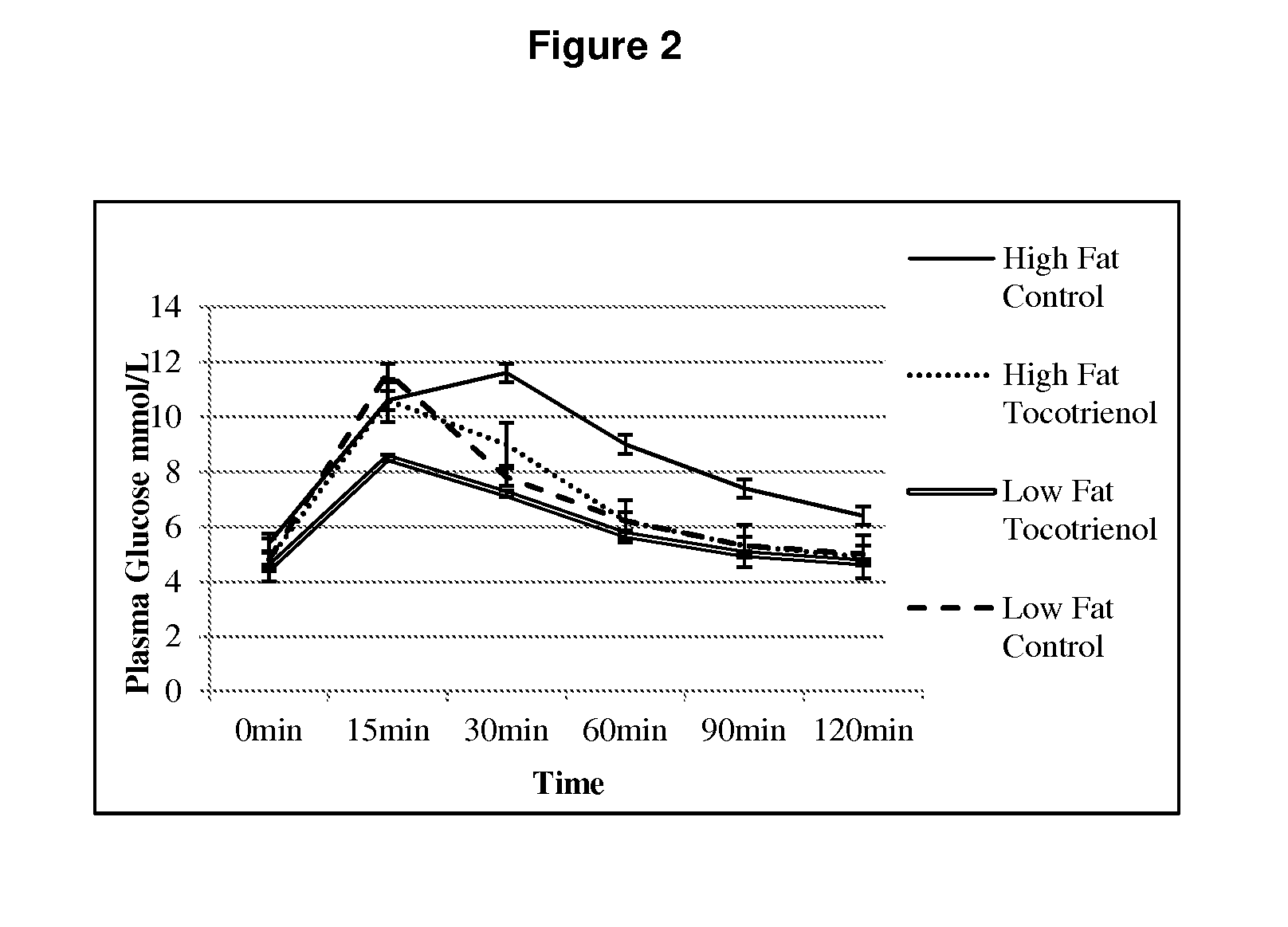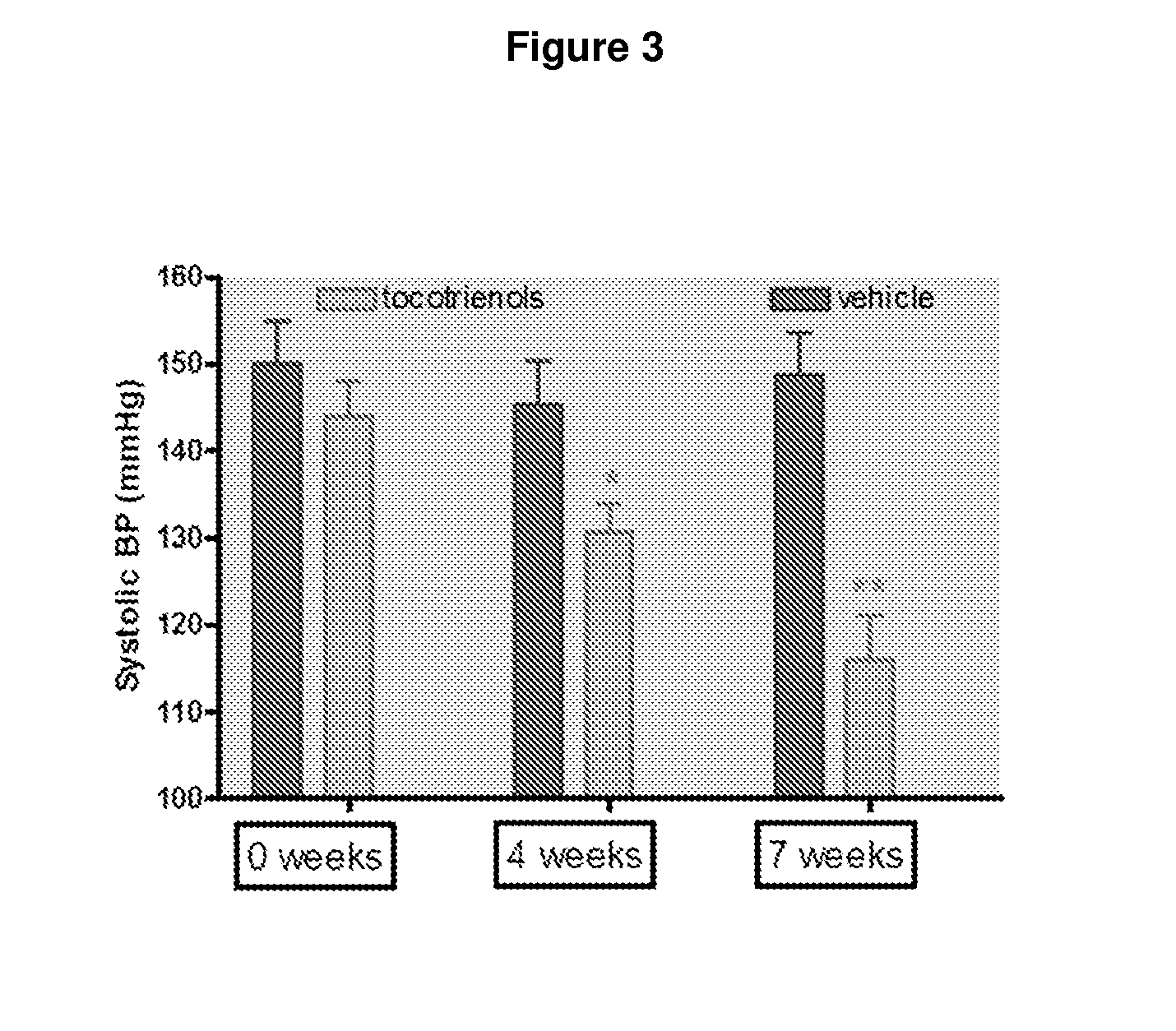Transmucosal delivery of tocotrienol
- Summary
- Abstract
- Description
- Claims
- Application Information
AI Technical Summary
Benefits of technology
Problems solved by technology
Method used
Image
Examples
example 1
The Effect of Dietary Tocotrienols on Glucose Tolerance, Hypertension, Cardiac Fibrosis and Renal Sodium Excretion in Rats
[0176]Sprague-Dawley rats were fed a high fat diet (22%) for 8 weeks to induce obesity.
[0177]As shown in FIG. 2, dietary tocotrienols (25 mg / kg / d) improved tolerance to a glucose load (2 g / kg, i.p.) in obese rats compared to animals that did, not receive tocotrienols (n=9, p<0.01; Mathai et al, 2011)
[0178]As shown in FIG. 3, dietary tocotrienols (50 mg / kg / d) gradually reversed the established hypertension in obese rats compared to the placebo-control group. Furthermore, as shown in FIG. 4, the reduction in blood pressure observed in FIG. 3 was accompanied by a reduction in cardiac fibrosis, as measured by hydroxyproline content of the left ventricle.
[0179]As shown in FIG. 5, cardiac fibrosis induced by isoproterenol was inhibited by tocotrienol supplementation. Since this model of cardiac fibrosis did not increase blood pressure, it shows that the antifibrotic ef...
example 2
Tocotrienol Supplementation Enhances Rat Exercise Capacity
[0181]Fifteen Sprague-Dawley rats were made obese through 10 weeks feeding on a high-fat diet and then split into a control (n=7) and tocotrienol supplemented group (n=8). As shown in FIG. 7, Supplementation of the diet with a tocotrienol rich fraction nearly doubled the capacity for untrained rats for exercise on a treadmill.
[0182]In the first part of this trial, an incremental test to exhaustion was performed to determine the maximum running speed of rates in the control and tocotrienol groups. FIG. 7A shows the average peak velocity reached in Control and tocotrienol-supplemented (50 mg / kg / d) groups performing the incremental test to exhaustion at week 8. This showed that maximum speed was similar between the groups. During this second treadmill run, individual rats ran at 65% of their maximum speed. FIG. 7B shows the average time taken to reach fatigue during the time to exhaustion for the 2 groups at week 10. Data showed...
example 3
Tocotrienol Supplementation Enhances Exercise Endurance in Humans
[0184]Tocotrienols were formulated into the following sublingual dosage form: A 220 mg sublingual tablet formulation was prepared containing a dose of 10 mg tocotrienol comprised of the actives delta-tocotrienol 9 mg and gamma tocotrienol 1 mg, and the following excipients: dextrose, mannitol, marine gelatin, l-leucine, l-arginine, pre-gel starch, PEG-200, propylene glycol, talc, silica dioxide, magnesium stearate, carotenoids.
[0185]Four subjects were administered two doses of 20 mg sublingual tocotrienol tablets in the morning and evening for a total of four weeks, with a placebo being administered in the same fashion for an additional period of four weeks thereafter either before or after the tocotrienol treatment.
[0186]At the conclusion of each four week period, subjects performed, an incremental exercise to exhaustion test on a standard exercise bike that comprised cycling on a stationary bicycle at staged incremen...
PUM
| Property | Measurement | Unit |
|---|---|---|
| Fraction | aaaaa | aaaaa |
| Therapeutic | aaaaa | aaaaa |
| Level | aaaaa | aaaaa |
Abstract
Description
Claims
Application Information
 Login to View More
Login to View More - R&D
- Intellectual Property
- Life Sciences
- Materials
- Tech Scout
- Unparalleled Data Quality
- Higher Quality Content
- 60% Fewer Hallucinations
Browse by: Latest US Patents, China's latest patents, Technical Efficacy Thesaurus, Application Domain, Technology Topic, Popular Technical Reports.
© 2025 PatSnap. All rights reserved.Legal|Privacy policy|Modern Slavery Act Transparency Statement|Sitemap|About US| Contact US: help@patsnap.com



